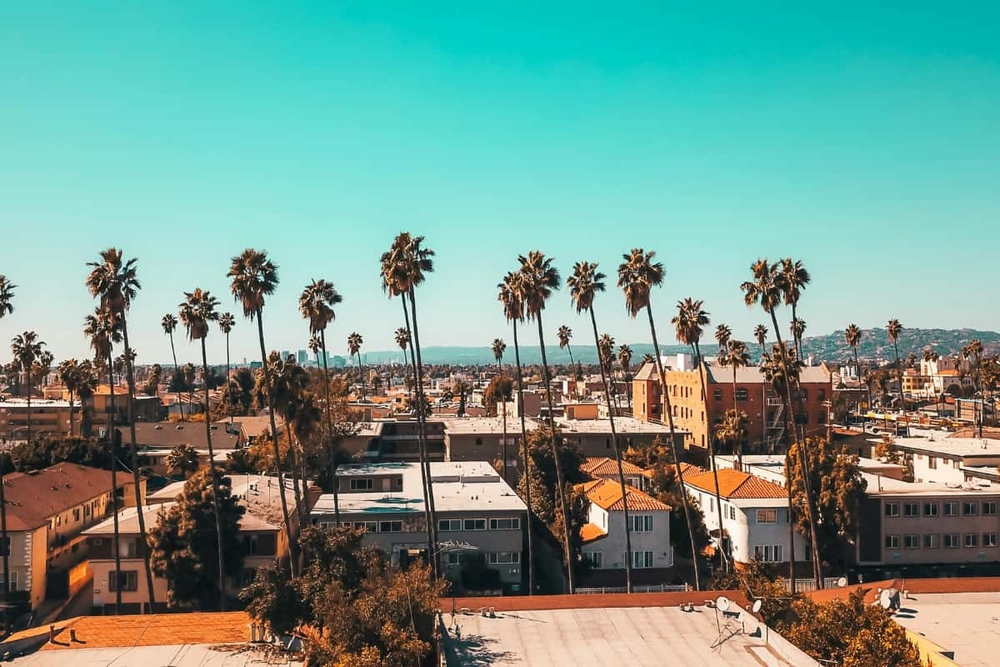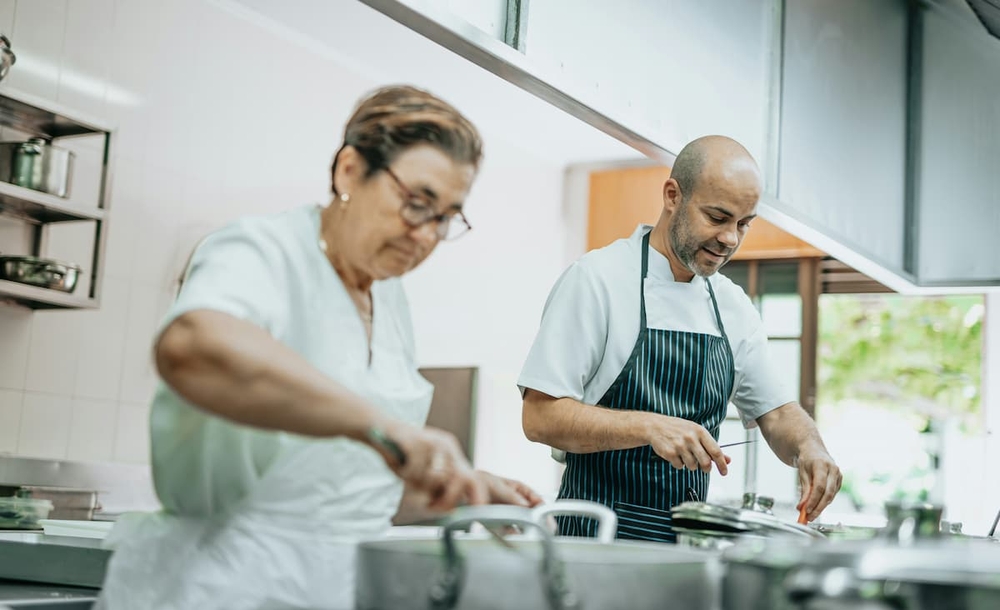Top ghost kitchen neighborhoods in San Francisco for faster delivery
Table of Contents
CloudKitchens
How many tacos can be delivered from a 1000sqft restaurant?
The same amount as a 200sqft ghost kitchen.
Ghost kitchens are reshaping the restaurant industry, especially in a fast-paced city like San Francisco. For food entrepreneurs looking to optimize delivery times, reach a dense customer base, and maximize profits, choosing the right neighborhood is crucial.
In this guide, we’ll explore the top locations for ghost kitchens in San Francisco and why location matters.
Are ghost kitchens legal in California?
Yes, ghost kitchens are fully legal in California. However, like all food businesses, they must comply with local health and zoning regulations. San Francisco, in particular, has embraced ghost kitchens, recognizing their role in supporting small businesses, reducing overhead costs, and increasing food accessibility across the city.
Ghost kitchens operate from licensed commercial kitchens and typically offer delivery-only services through platforms like Uber Eats. They are subject to health inspections and must maintain the same standards as traditional restaurants.
Read more: Food licenses and permits you need in California
Why location matters for ghost kitchens
For a ghost kitchen, success is closely tied to speed and convenience. Delivery time directly impacts customer satisfaction, and your location affects:
- Delivery radius and times;
- Access to a high-density customer base;
- Visibility on delivery apps;
- Costs for delivery drivers.
Choosing a location near major residential areas, office hubs, and high-traffic neighborhoods is key to boosting sales and minimizing operational challenges.
Read more: Smart strategies and tips to optimize delivery routes for your restaurant
Top locations for ghost kitchens in San Francisco
Selecting the right neighborhood is essential when it comes to the success of a ghost kitchen. San Francisco, with its diverse neighborhoods and a big food culture, offers plenty of strategic spots ideal for delivery-focused operations.
Check the best areas to establish your kitchen based on customer demand, accessibility, and market trends:
1. SoMa (South of Market)
- Dense mix of tech offices, startups, and residential buildings;
- High delivery demand from professionals and young residents;
- Easy access to major freeways for delivery drivers.
SoMa is one of the most dynamic neighborhoods for food delivery. Its diverse population and late-night work culture make it ideal for ghost kitchens offering fast casual, Asian fusion, pizza, or healthy bowls.
2. Mission District
- One of the city’s most food-centric neighborhoods;
- High foot traffic and delivery demand, especially for Latin, Asian, and vegan cuisines;
- Central location for serving multiple parts of the city.
The Mission is a top contender if you’re launching bold, trendy, or multicultural food concepts. It’s vibrant, youthful, and deeply connected to San Francisco’s culinary heartbeat.
3. Financial District
- High concentration of office workers and tourists;
- Ideal for breakfast, lunch, and quick dinner options;
- Strong demand for premium and fast-service meals.
While many businesses shifted to remote work, in-office presence is rebounding, making the Financial District a prime location for weekday delivery orders.
4. Inner Sunset
- Residential-heavy neighborhood with families and young professionals;
- Close to UCSF Medical Center (high demand from staff and visitors);
- Less competition compared to downtown areas.
If you want to tap into a stable residential market with consistent delivery demand, Inner Sunset offers a strategic opportunity for comfort food, Asian cuisine, and healthy meal services.
5. Hayes Valley
- Trendy, upscale residential area;
- Strong appetite for artisanal, farm-to-table, and specialty foods;
- Well-positioned for fast delivery to Civic Center, Downtown, and Market Street.
Hayes Valley is perfect for premium or niche brands looking to serve a more affluent customer base willing to pay for quality and fast service.
6. Dogpatch
- Emerging neighborhood with growing residential density;
- Close to UCSF Mission Bay campus and the Chase Center;
- Opportunities for high-volume event-based orders.
Dogpatch’s growth makes it a smart long-term play for ghost kitchen operations, especially for businesses specializing in American fare, sandwiches, pizza, and quick bites.
Read more: How shared kitchens help reduce overhead costs for food businesses
What area of San Francisco has the best restaurants?
If you want to start a food business in San Francisco, it’s also necessary to know where people normally go or try to find the best food, right? So, you may need to know where the best restaurants of San Francisco are, even if your business is a ghost kitchen and focused on delivery.
The Mission District consistently ranks as one of the top areas in San Francisco for restaurants. It boasts a diverse culinary scene with influences from Mexican, Salvadoran, Asian, and New American cuisines.
Known for its creative spirit and constant innovation, the Mission offers everything from high-end dining experiences to casual street food, making it attractive to a broad customer base.
Other outstanding areas include:
- North Beach: Famous for Italian cuisine, classic pizzerias, and cozy trattorias.
- Chinatown: Home to traditional and modern Chinese food, from dim sum to contemporary fusion dishes.
- SoMa: Offers a mix of upscale modern American, Asian fusion, and fast-casual eateries.
- Hayes Valley: Popular for artisanal and farm-to-table concepts, perfect for foodies seeking quality and authenticity.
- Ferry Building Marketplace: Features an eclectic mix of gourmet food vendors, artisan products, and waterfront dining experiences.
These neighborhoods not only offer exceptional dining options but are also hot spots for delivery demand, making them strategic targets for ghost kitchen operations.
Read more: Top delivery solutions every restaurant should know about
Legal and regulatory considerations
Ghost kitchens in San Francisco must:
- Operate out of licensed, inspected facilities;
- Follow food safety regulations;
- Have proper business licensing and insurance;
- Pay attention to zoning regulations.
CloudKitchens can simplify compliance by offering fully licensed kitchens built to meet San Francisco’s health and zoning codes, helping operators avoid costly mistakes.
Why CloudKitchens is the best option for ghost kitchens in San Francisco
CloudKitchens offers purpose-built facilities across San Francisco’s top neighborhoods. Benefits include:
- Pre-approved kitchen spaces;
- Support with permitting and inspections;
- Low upfront costs compared to traditional restaurants;
- Access to delivery-optimized locations;
- Dedicated customer support and operational tools.
You get a turnkey solution to start delivering faster, increase your reach, and focus on growing your brand without the headaches of traditional restaurant ownership.
Finding the right location is critical to the success of your ghost kitchen. By choosing high-demand neighborhoods like SoMa, Mission District, or the Financial District, you position your brand for faster delivery, higher order volumes, and stronger brand growth.
Ready to launch in San Francisco’s hottest delivery zones? Partner with CloudKitchens for access to the best ghost kitchen spaces. Contact us today to find your perfect kitchen!
DISCLAIMER: This information is provided for general informational purposes only and the content does not constitute an endorsement. CloudKitchens does not warrant the accuracy or completeness of any information, text, images/graphics, links, or other content contained within the blog content. We recommend that you consult with financial, legal, and business professionals for advice specific to your situation.
More insights & stories
There’s more where that came from.
Get in the know and check out our additional insights


